Peranakan needlework is a dying craft. It is time-consuming, labour-intensive and very much difficult to master. Together with the decline in Peranakan culture, the passing on of Nyonya needlework skills seems to have been lost with time.
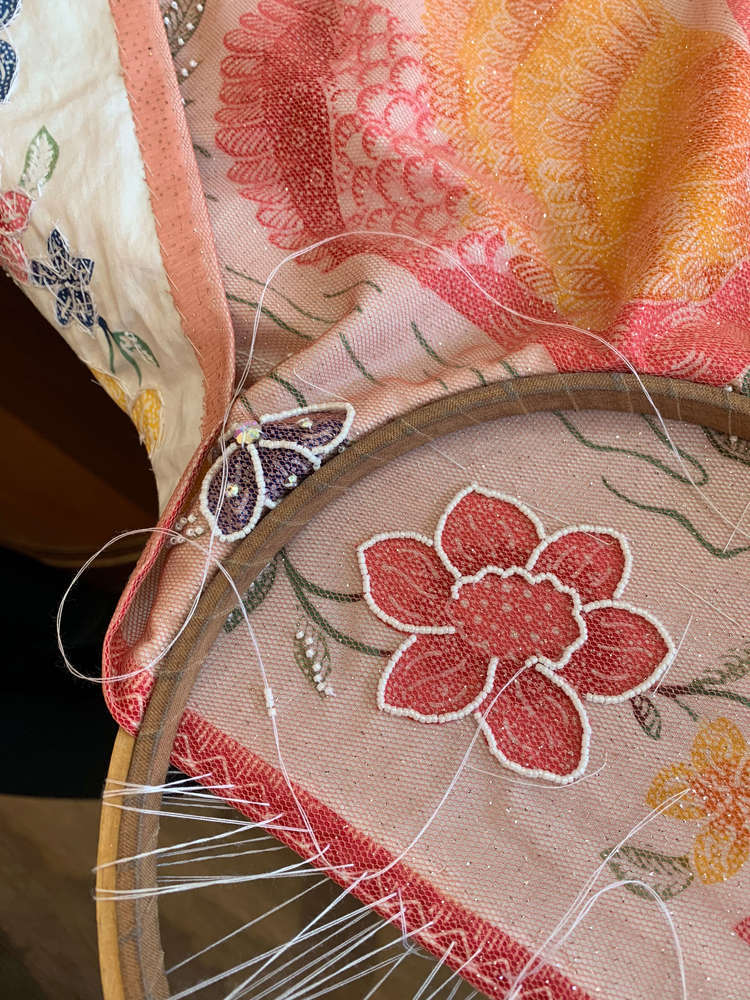
Despite it being so, this vanishing craft is undeniably beautiful. It was back then and still is now. It is detailed, intricate, and only ever handmade. If you haven’t heard of Peranakan embroidery or beading, here’s a quick guide you ought to read.
Peranakan Beading
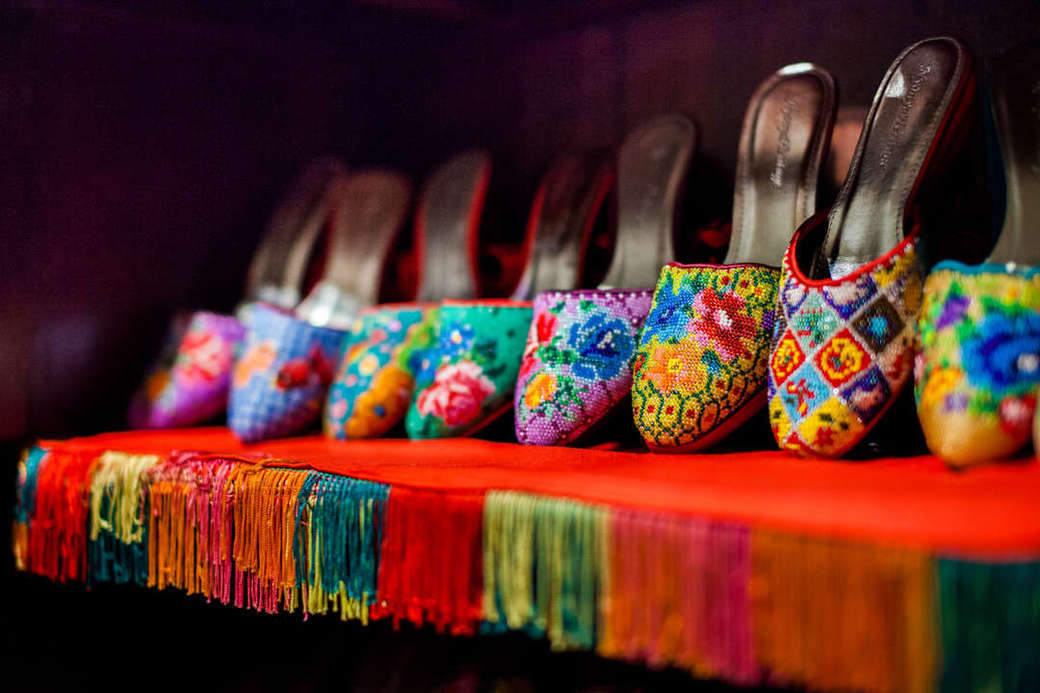
Kasut Manek, traditional Peranakan beaded slippers
An unmistakable aspect of Peranakan culture, beaded bags and shoes are quintessential to Peranakan fashion. Don’t mistake the vibrant colours for a kid’s work though! The beads used—also referred to as ‘charlottes’—are typically only 1.5 millimetres in diameter, about a third the length of a single short-grain rice. Each miniscule bead has to be sewn individually, testing not only the maker’s skills but also their patience and eye for detail.
Although there is a wide range of beaded items, from tablecloths to purses, the most popular use for Peranakan beadwork is in the making of the kasut manek. No traditional Peranakan sarong kebaya is complete without a dainty pair of beaded slippers! Taking an average of three to four months to complete, a finely stitched pair of these traditional slippers can cost nearly a thousand dollars.
Interested in learning the craft of Peranakan beading from local artisans? Join us in an authentic Peranakan beading experience! Find out more here.
Silk Thread Embroidery
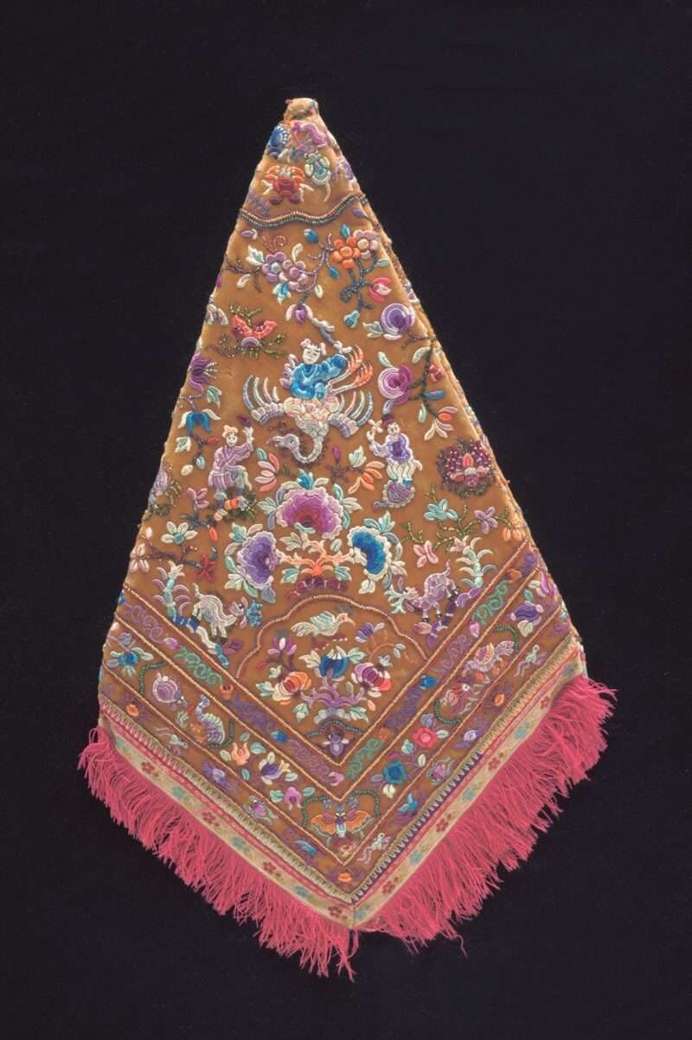
Woman’s ceremonial handkerchief embroidered with silk thread. Malacca or Singapore, late 19th century.
Collection of the Asian Civilisations Museum, Singapore
Source: cam.org.tw
Similar to Chinese embroidery styles, this form of Peranakan needlework uses colourful silk threads to create intricate designs of phoenixes and deities with a shiny finish. Unique to the Peranakans however, would be the influences reflected in the embroidered pieces. If you look at the embroidery of Peranakan Nyonyas in Malacca, you might find a horseshoe crab or two! The crabs are enjoyed by the locals as a dish and are used as a symbol of marital fidelity and bliss.
This technique is perhaps the most versatile of all, used to decorate anything from kebayas to handkerchiefs and whatnot.
Metal Thread Embroidery
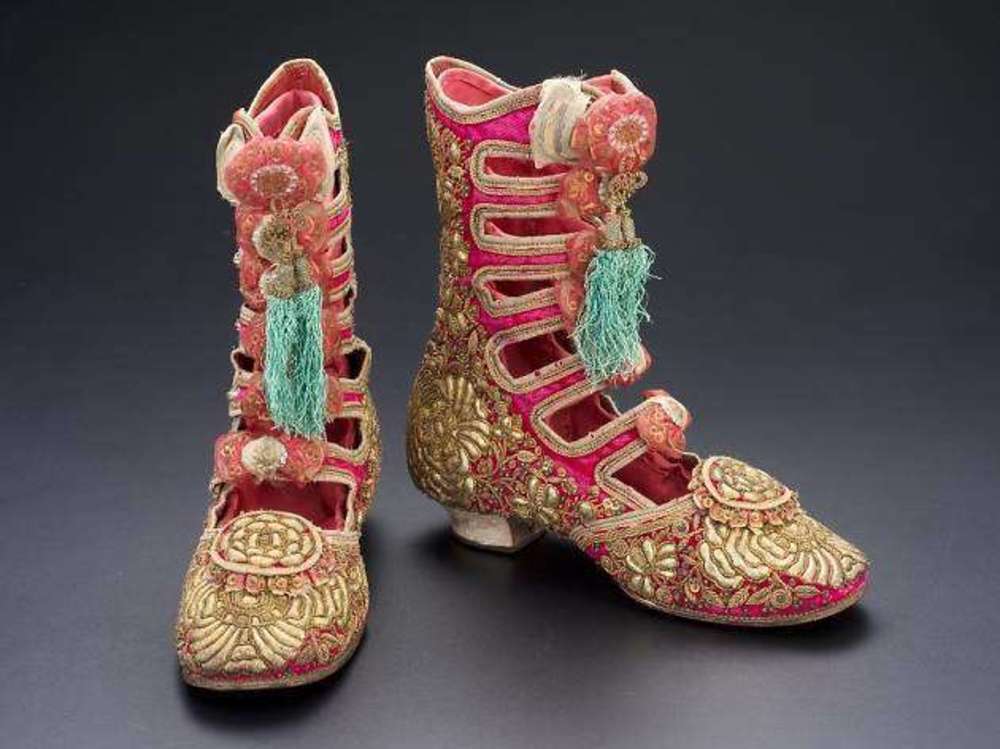
Woman’s ankle boots. Java, late 19th century. Silk, lametta, metal, sequins, gold, brass, stucco, height 24.5 cm.
Peranakan Museum, Gift of Mr and Mrs Lee Kip Lee
Source: National Heritage Board
Who said embroidery can’t be avant-garde? Using metal threads, raised gold and silver embroidery adds glamour and a touch of boldness to any outfit. Take this stunning pair of ankle boots from late 19th century Java for example. Non-Europeans were not permitted by law to wear European clothing at the time, and Nyonyas generally wore Chinese shoes or slippers. Yet the wealthy Nyonyas wore boots like these, making a fashion statement and declaring their privileged status.
Drawn Thread Embroidery
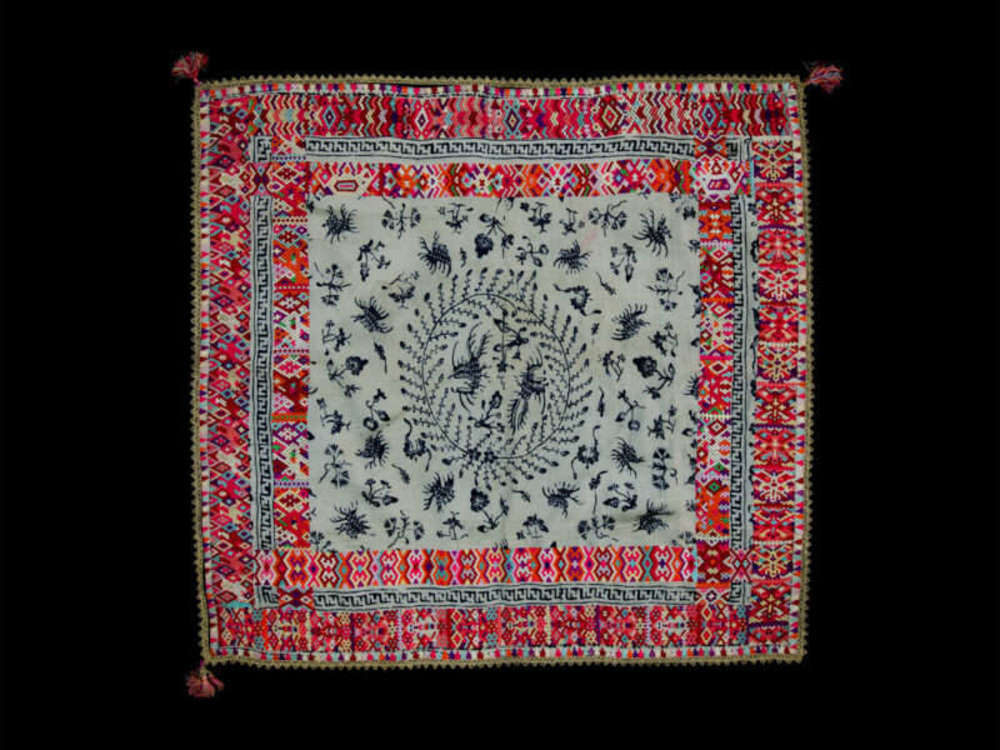
Silk batik handkerchief embroidered with drawn work. West Sumatra, Indonesia, late 19th – early 20th century.
Collection of Don Harper, Georgia, USA
Source: cam.org.tw
Embroiderers would remove pieces of thread from a piece of fabric, then weave a different fabric into the spaces for pops of colour. The drawn thread technique is complicated, making it the rarest form of Peranakan needlework. Other than Chinese elements, the embroidered textiles often drew inspiration from traditional Indonesian batik patterns.
Mastering the skills of embroidery was essential to a Nyonya. Being able to produce fine pieces of craft—on top of cooking and cleaning—would make her ideal for marriage. While these standards are no longer used in modern society, to deem the Peranakan crafts obsolete is a worrying view. And a short-sighted one at that. As with all traditional crafts, the moment it stops being passed on to the next generation, it is as good as gone.

Source: GIPHY
Integral to Peranakan culture, Peranakan needlework is representative of Singapore’s heritage. It shows the way of life of those who lived on these shores. We, at Culturally, stand by the artisans who believe in the grace, resilience and timelessness of the craft. What about you?
• • •
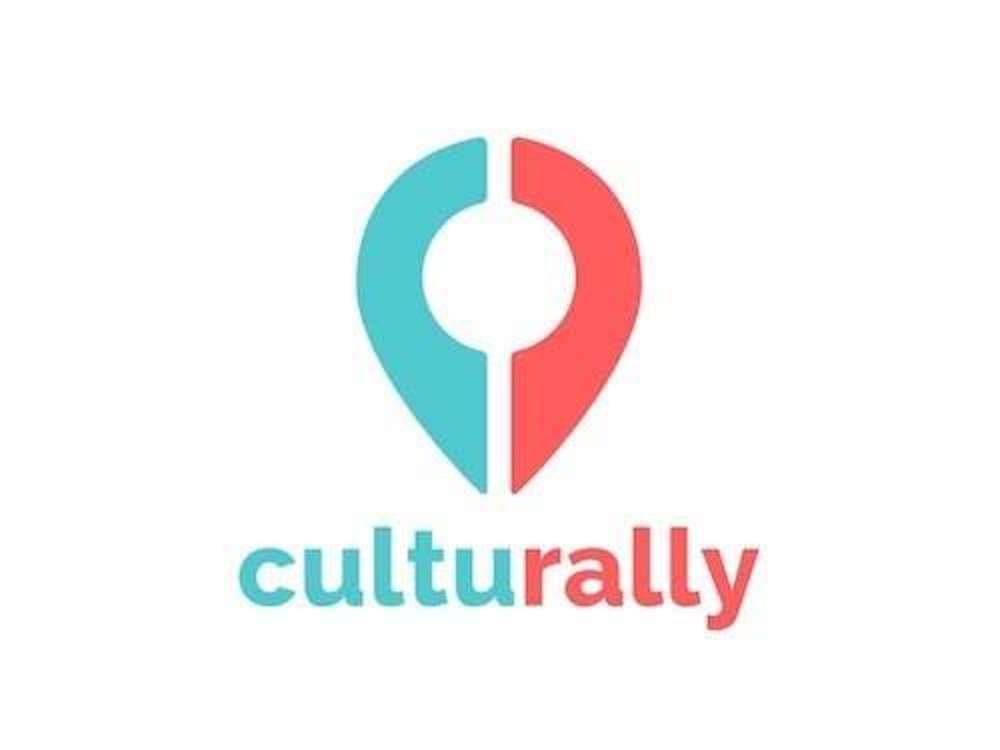
Heading to Joo Chiat to check out the Peranakan shophouses? Check out Culturally’s full list of cultural experiences available in Katong and Joo Chiat here!